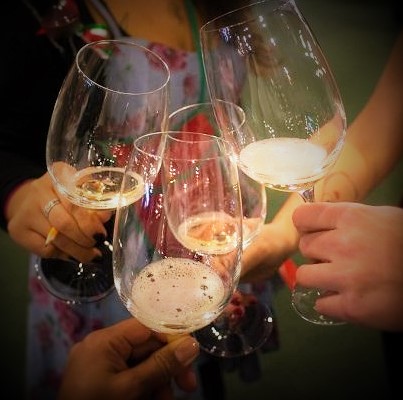TOURING AND TASTING TIPS

When going on a trip, especially one focused on wine tasting, thoughtful planning and preparation greatly enhances your overall experience.
Research
Before heading out, do some research; know your favorite wines and where to find them. Wine growing regions such as Sonoma and Napa each have several distinct appellations within them, each with a specific microclimate suitable for growing various types of grapes. Researching the area to discover which distinct locale is best suited to which grapes will ensure that you are able to find and taste your favorite wines.
will ensure that you are able to find and taste your favorite wines.
Preparation
Once you decide where you want your tasting experience to take you, make sure to call in advance, especially if tasting in a large group or during a busy holiday. Many wineries can accommodate walk-ins of small groups but some are by reservation only; checking in advance can save you the disappointment of showing up and not being able to taste. If you plan on bringing kids or pets, also make sure to check in advance whether they will be welcome. Tasting is an adult experience, and some locations discourage bringing children along.
Attire
Wine growing regions often have variable weather throughout the day, so wearing the correct clothing can ensure you are comfortable. It is generally cool and sometimes foggy in the morning, so dressing in layers and carrying a light jacket is advised. Wine caves are kept below 60 degrees, so if planning a visit to one a light jacket will be a welcome addition. Comfortable and sturdy shoes are also a great idea; your tasting tours might include walks through the vineyards and you will be on your feet for a good portion of the day. During the summer it gets hot and sunny; sunglasses, a hat, and sunscreen all help to keep you cool and safe.
While at a winery, following some simple rules of tasting etiquette will enhance your enjoyment and help the staff provide the best experience possible. Remember to be courteous to staff and other tasters, turning phones to silent and taking calls outside allows staff to effectively share information about each pour. While at a glance it may seem rude, spitting or dumping into the dump bucket plays an important role in the tasting experience, especially if you plan on making several tasting stops throughout the day. If you feel you have had a sufficient taste, dumping the remainder is perfectly acceptable and signals to the pourer that you are ready for the next taste. If, on the other hand, you find yourself enamored of a certain wine and would like to try it again, politely asking your pourer if you can “revisit” a previous pour will ensure a second taste. Sharing tastes can be a good way to maximize your value, though not all wineries are enthusiastic about it as they don’t always want to open stock for a single taste. Be aware of yourself and your surroundings; people want to taste in a relaxed and enjoyable environment.
After tasting, if you find you really enjoyed the experience, consider purchasing some wine to take home. Nothing shows appreciation for your pourer like purchasing their recommended wine, and many wineries will even refund your tasting fee after a purchase! Lastly, don’t be afraid to ask questions. Tasting room attendants and hotel concierges are all knowledgeable about the area, viticulture, and tasting and are happy to help. And if you feel that you might miss out on some of the finer points when going out alone, consider a guided tour. Knowledgeable guides can take an already wonderful experience to the next level. Most of all, remember to relax and have fun!


